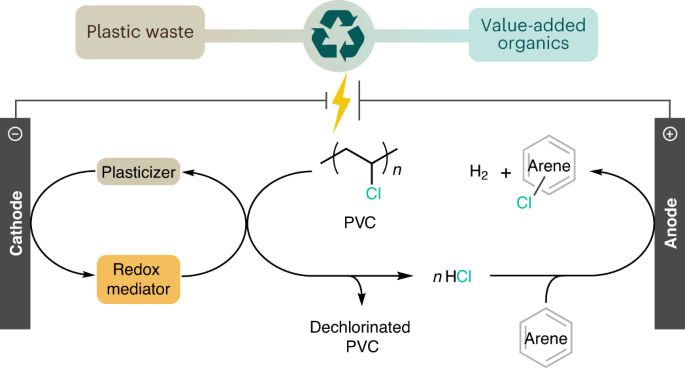- 全く異なる素材を溶接する新技術により、より優れた自動車が実現できるかもしれない。
New techniques for welding very different materials could enable better cars
- 簡便な官能基導入層による金属と無極性ポリプロピレン複合体の接合 Joining of metal and non-polar polypropylene composite through a simple functional group seeding layer
- 大面積固体積層造形技術によるAl-Feバイメタル部品のアモルファス界面微細構造と高接合強度化 Amorphous interfacial microstructure and high bonding strength in Al-Fe bimetallic components enabled by a large-area solid-state additive manufacturing technique
全く異なる素材を溶接する新技術により、より優れた自動車が実現できるかもしれない。 New techniques for welding very different materials could enable better cars
2022-11-29 ミシガン大学
金属とプラスチックを組み合わせることで、自動車や小型トラックの構造を最大40%軽くできることが、コンピューターモデルから明らかになっている。
熱と圧力を適切な場所にかけると、プラスチックに含まれる炭素と酸素が金属と結合することを発見した。
研究者たちが使ったのは、円筒形の回転ヘッドが付いたボール盤に似た既製品の機械で、プラスチックの上に金属を置き、ヘッドを2つの素材の上に下ろす。これにより、熱と圧力が発生し、2つの材料がスポット溶接または線状溶接で結合される。
酸素と炭素の化合物を十分に含んでいるプラスチックであれば、どんな金属でも直接接合することができる。重要なのは、材料の組み合わせによって溶着できる熱と圧力の「スイートスポット」を計算することである。
<関連情報>
- https://news.umich.edu/plastic-to-metal-steel-to-aluminum-the-future-of-welding-and-lightweight-vehicles/
- https://www.sciencedirect.com/science/article/abs/pii/S1526612522007952
- https://www.sciencedirect.com/science/article/abs/pii/S0924013622002333
簡便な官能基導入層による金属と無極性ポリプロピレン複合体の接合 Joining of metal and non-polar polypropylene composite through a simple functional group seeding layer
A.S.Khan,F.Liu,P.Dong
Journal of Manufacturing Processes Available online: 22 November 2022
DOI:https://doi.org/10.1016/j.jmapro.2022.11.022

Abstract
Polypropylene (PP) and its composites are one of the hardest to directly join with metals due to their inherent chemical incompatibility. This paper presents a simple, efficient, and cost-effective method for joining PP composite to aluminum alloy in spot welding configuration by seeding the functional groups via an insert layer of PA6 thin film without requiring surface or material pre-treatment. The resulting joint loading capacity is shown to be sufficiently high to consistently develop failures in PP substrates in lap shear tensile tests away from the bonded area. Joint interface microstructure features are examined in detail. Bonding mechanisms are then described based on the detailed observations obtained in this study.
大面積固体積層造形技術によるAl-Feバイメタル部品のアモルファス界面微細構造と高接合強度化 Amorphous interfacial microstructure and high bonding strength in Al-Fe bimetallic components enabled by a large-area solid-state additive manufacturing technique
F.C.Liu,P.Dong,A.S.Khan,K.SuncW.Lu,A.Taub,J.E.Allison
Journal of Manufacturing Processes Available online: 16 July 2022
DOI:https://doi.org/10.1016/j.jmatprotec.2022.117721

Abstract
There is a growing demand for the ability to manufacture large-scale aluminum-steel (Al-Fe) bimetallic components for realizing the enormous advantages of advanced multi-material structures which offers effective lightweighting and increasingly smart functionalities. The formation of brittle intermetallic compounds (IMCs) at the bonding interface has been the major barrier to safety-critical applications with existing manufacturing processes, including additive manufacturing techniques. This study showed that a combination of a novel modified friction stir additive manufacturing (M-FSAM) and pre-processing surface polishing of the stainless steel enables the formation of a relative homogenously distributed nanoscale amorphous layer along the bonding interface between the 6061 Al and the 304 stainless steel. As a result, the high interfacial bonding strength of 280 MPa was achieved. Compared to the existing friction stir welding/AM processes, M-FSAM enables a significant increase in tool traverse speed and a remarkable reduction in tool cost for Al-Fe bimetallic component manufacturing. The nanoscale amorphous layer consisted of a continuous O and Mg rich layer 10–20 nm in thickness and a discontinuous Al-Fe-Si layer 50–100 nm in thickness. The O and Mg rich layer consisted of an amorphous matrix with nanocrystalline precipitates while the Al-Fe-Si layer consisted of a q-glass with some degree of crystallinity. The formation mechanism of the unique Al-Fe interfacial microstructure was analyzed in detail in this study.



